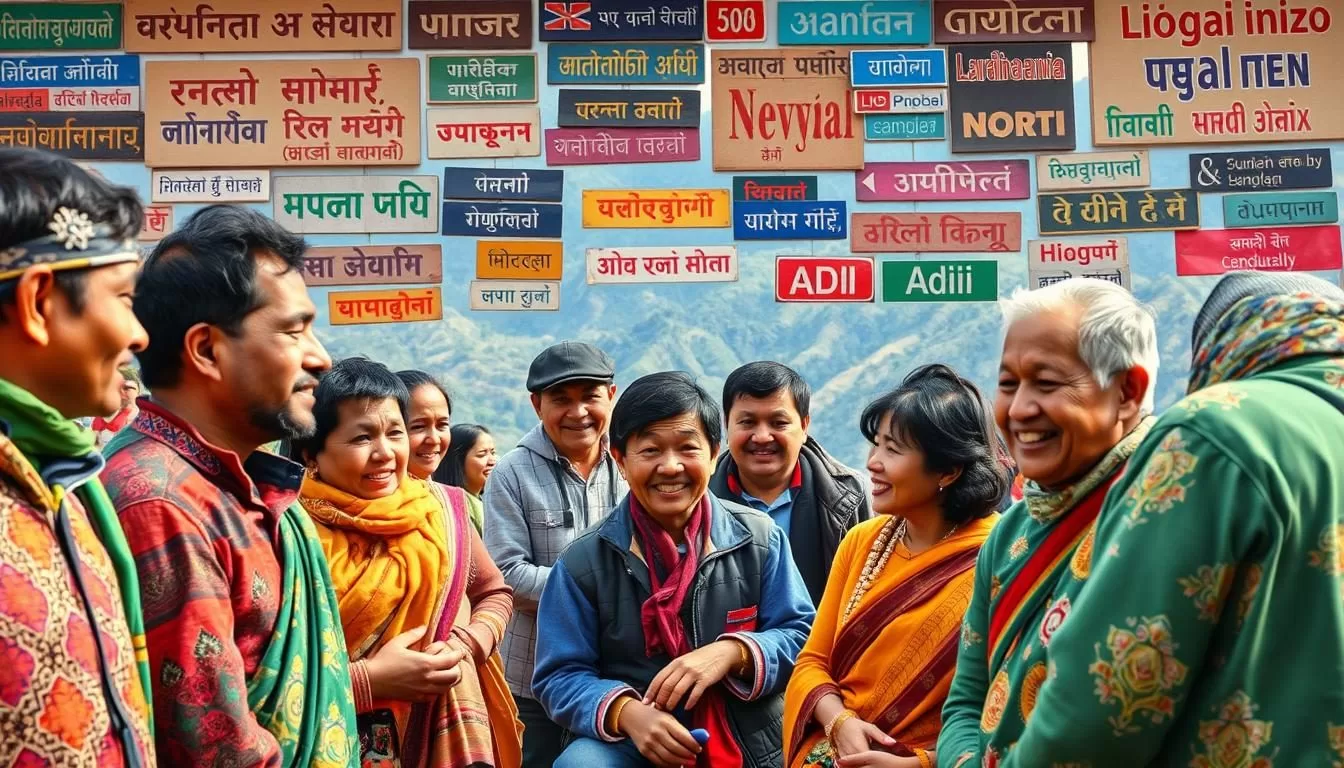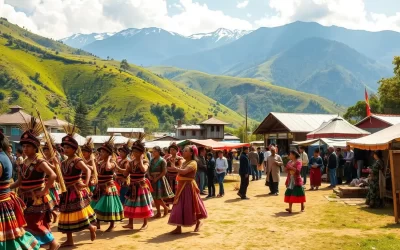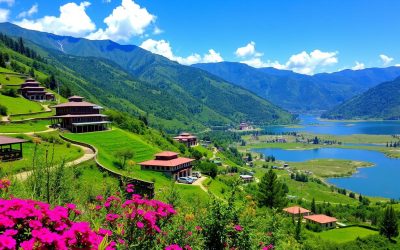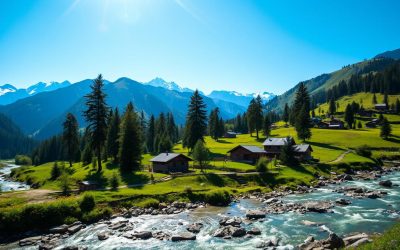You are about to explore the rich linguistic tapestry of Arunachal Pradesh, a state in East India known as the “Land of the Rising Sun.”
With a population of 1,383,727 and an area of 83,743 square kilometers, this northeastern state boasts an incredible diversity of languages, with over 50 distinct languages and dialects spoken across the region.
As you delve into the languages of Arunachal Pradesh, you’ll understand the importance of language in preserving cultural identity in this remote Himalayan region, home to 26 major tribes and over 100 sub-tribes.
This diversity reflects the state’s unique ethnic composition and its connection to broader linguistic patterns across North East India and neighboring countries.
The Linguistic Landscape of Arunachal Pradesh
The linguistic landscape of Arunachal Pradesh is as diverse as its geography. The state’s complex terrain, ranging from foothills to the Great Himalayas, has given rise to a multitude of languages. This diversity is a reflection of the state’s unique cultural and geographical characteristics.
Overview of Language Diversity
Arunachal Pradesh is home to a wide array of languages, belonging to different language families. The state’s linguistic diversity can be attributed to its strategic location and historical trade routes. You can observe a significant variation in languages spoken across different regions, influenced by factors such as geography and cultural exchange.
- Languages in Arunachal Pradesh belong to several families, including Tibeto-Burman and Tai.
- The diversity is further enriched by the presence of language isolates.
Geographic Distribution of Languages
The geographic distribution of languages in Arunachal Pradesh closely follows the state’s physiographic regions. As you move from south to north, the languages change, reflecting the state’s varied terrain. In the western districts, such as Tawang and West Kameng, Monpa and related languages are predominant. In contrast, the central districts are home to Tani languages, including Nyishi, Apatani, and Adi.
As you journey eastward, the linguistic landscape shifts, with Mishmi languages and Tai influences becoming more prominent. The southeastern regions show linguistic connections to Nagaland, highlighting the complex linguistic tapestry of the state.
English: The Official Language of Arunachal Pradesh
In Arunachal Pradesh, English serves as the official language, facilitating governance and education. As the state continues to develop, the role of English has become increasingly significant.
Adoption of English in Historical Context
The adoption of English as the official language of Arunachal Pradesh has historical roots. It was introduced during the British colonial era and has continued to be used in official capacities post-independence.
This historical context has shaped the current linguistic landscape, with English being an integral part of state administration.
Role of English in Administration and Education
English is the primary language used in government administration in Arunachal Pradesh, from state-level offices to district headquarters. It is also the medium of instruction in schools and colleges, playing a crucial role in the state’s education system.
| Domain | Role of English |
|---|---|
| Administration | Primary language for government offices |
| Education | Medium of instruction in schools and colleges |
English proficiency is essential for career advancement and participation in public life in Arunachal Pradesh. However, implementing English-medium education in remote areas poses challenges due to limited exposure to the language.
Arunachal Pradesh, India: Official and Widely Spoken Languages
As you explore Arunachal Pradesh, you’ll discover a complex tapestry of languages, with English holding an official status. This northeastern Indian state is known for its extraordinary linguistic diversity, with numerous languages spoken across its various tribes and communities.
The state’s linguistic landscape is shaped by its history, geography, and cultural heritage. English, being the official language, plays a crucial role in administration, education, and governance.
Statistical Overview of Language Speakers
Arunachal Pradesh is home to a diverse population, with various languages being spoken across different districts. While English is the official language, local languages and dialects are widely used in daily life. According to the data available, the distribution of language speakers varies significantly across the state.
Some of the key statistics include:
- A significant percentage of the population speaks local languages, with Nyishi and Adi being among the most widely spoken.
- English is widely used in official contexts, education, and among the educated population.
- Hindi and Assamese also have a presence, particularly in trade and cultural exchange.
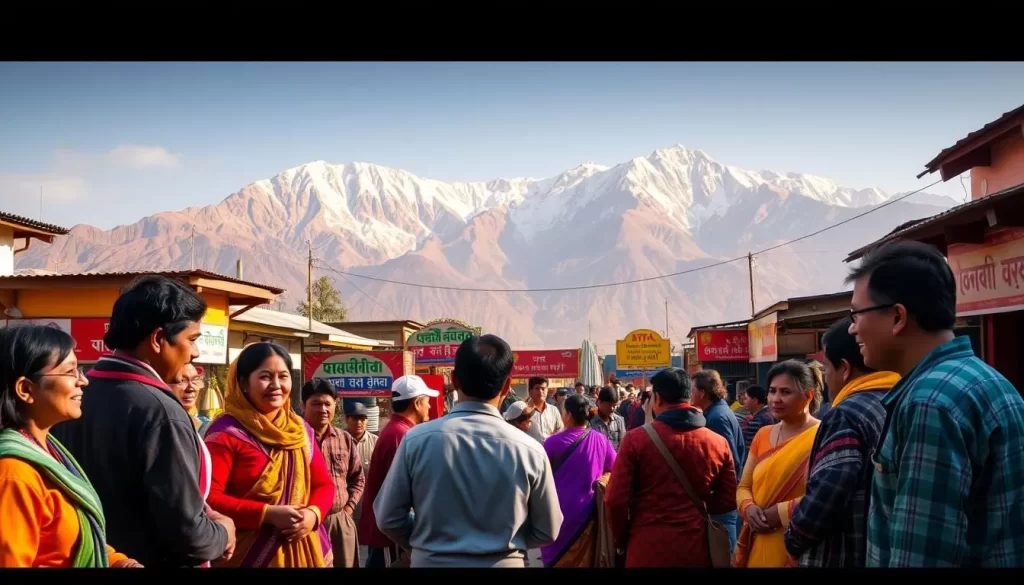
Language Policies and Recognition
The government of Arunachal Pradesh has implemented various policies to promote the use of local languages while maintaining English as the official language. Efforts have been made to include local languages in early education and cultural preservation programs.
Some key initiatives include:
- Recognition of Local Languages: The state government has recognized the importance of preserving local languages and dialects.
- Inclusion in Education: Initiatives to include local languages in school curricula are underway, aiming to promote linguistic diversity.
- Cultural Preservation: Programs to document and preserve local languages and cultural practices are being implemented.
These efforts reflect the state’s commitment to balancing the promotion of English as the official language with the preservation of its rich linguistic heritage.
Major Tribal Languages and Their Distribution
In Arunachal Pradesh, the rich tapestry of tribal languages includes several prominent ones, each with its own distinct distribution and cultural significance. You will explore the diverse linguistic landscape of the region through some of its major tribal languages.
Nyishi Language and Its Speakers
The Nyishi language is one of the widely spoken languages in Arunachal Pradesh, particularly among the Nyishi community. It belongs to the Tibeto-Burman language family, which is prevalent in the region. The Nyishi language is known for its complex grammar and rich oral traditions.
Adi Language Group
The Adi language group is another significant linguistic category in Arunachal Pradesh, spoken by the Adi people. This language group includes various dialects and is characterized by its unique phonological features. The Adi language plays a crucial role in the cultural and social life of its speakers.
Galo and Tagin Languages
Galo and Tagin are Tani languages spoken in Arunachal Pradesh, belonging to the Tibeto-Burman language family. The Galo language is primarily spoken in the West Siang district, while Tagin is mainly spoken in the Upper Subansiri district. You will discover how these languages, despite being related, have developed distinct characteristics due to geographical separation. The Galo and Tagin languages are used in various cultural contexts, including traditional ceremonies and daily life. However, they face challenges in terms of documentation and preservation in the modern context.
Understanding these languages provides insight into the rich linguistic diversity of Arunachal Pradesh. You can appreciate the importance of preserving these languages for future generations.
The Tani Language Family
As you explore the linguistic diversity of Arunachal Pradesh, you’ll encounter the significant Tani language family. This language family is a crucial element in understanding the cultural and historical context of the region. The Tani languages are predominantly spoken in the central parts of Arunachal Pradesh, a region known for its rich linguistic heritage.
Eastern Tani Languages
The Eastern Tani languages are spoken in the eastern districts of Arunachal Pradesh. These languages have distinct grammatical structures and vocabularies that reflect the unique cultural practices of their speaker communities. You’ll find that the Eastern Tani languages have been influenced by their geographic isolation and historical interactions with neighboring tribes.
Key Features of Eastern Tani languages include their complex tonal systems and rich oral traditions. These languages are not only means of communication but also carriers of cultural heritage, including stories, myths, and historical accounts.
Western Tani Languages
Western Tani languages, including Nyishi, Apatani, Galo, and Tagin, are spoken in the western parts of central Arunachal Pradesh. These languages are distributed across various districts such as Papum Pare, Kurung Kumey, Lower Subansiri, and West Siang. You’ll discover that Western Tani languages have distinctive linguistic features that differentiate them from their Eastern counterparts.
The geographical distribution of Western Tani languages reflects the historical movements and settlements of their speaker communities. Understanding these languages provides insights into the cultural practices, social structures, and historical narratives of the people in this region.
Tibeto-Burman Languages in Arunachal Pradesh
As you explore the linguistic diversity of Arunachal Pradesh, you’ll discover the significant presence of Tibeto-Burman languages. This language family is a crucial component of the region’s cultural identity. The Tibeto-Burman languages are spoken across various districts, with a notable concentration in the western parts of the state.
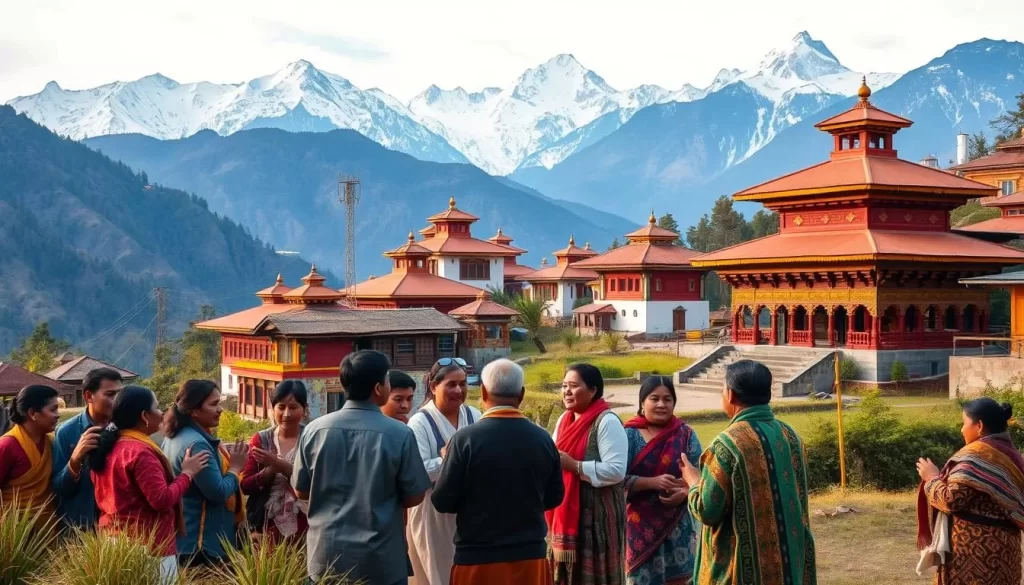
Monpa Language and Its Dialects
The Monpa language is one of the prominent Tibeto-Burman languages spoken in Arunachal Pradesh, particularly in the West Kameng and Tawang districts. It has several dialects, which are closely related to the cultural practices and traditions of the Monpa people. The language is not only a means of communication but also plays a vital role in the religious and cultural ceremonies of the community.
Sherdukpen and Related Languages
Sherdukpen is another significant Tibeto-Burman language spoken in the West Kameng district of Arunachal Pradesh, near the border with Bhutan. It is closely related to the Monpa language and shares cultural similarities with other languages in the region, such as Bugun (Khowa) and Sulung (Puroik). Despite these cultural similarities, Sherdukpen has distinctive linguistic features that set it apart from neighboring languages. The language is an essential part of the community’s identity and is used in traditional practices and ceremonies.
You’ll find that these languages face challenges due to their relatively small speaker populations and the influence of more dominant languages in the region. Efforts to document and preserve these languages are crucial for maintaining the linguistic diversity of Arunachal Pradesh.
Mishmi Languages of Eastern Arunachal
In the rugged terrain of eastern Arunachal Pradesh, the Mishmi languages thrive, showcasing the region’s rich cultural diversity. The Mishmi languages are a significant part of the linguistic landscape of this east India region.
The Mishmi languages comprise three main languages: Idu Mishmi, Digaru Mishmi, and Miju Mishmi. Each of these languages has its unique characteristics and is spoken in different parts of the Arunachal Pradesh region.
Idu Mishmi
Idu Mishmi is spoken in the upper Dibang Valley and some parts of the Lower Dibang Valley district. It’s known for its complex grammatical structure and is an important part of the cultural identity of the Idu Mishmi people.
Digaru Mishmi
Digaru Mishmi is primarily spoken in the valley regions of the Dibang Valley district. It has distinct linguistic features that differentiate it from other Mishmi languages.
Miju Mishmi
Miju Mishmi, also known as Kman, is spoken in the easternmost parts of Arunachal Pradesh, particularly in the Anjaw district near the border with Myanmar. It’s known for its unique linguistic features and plays a crucial role in maintaining the cultural heritage of the Miju Mishmi community.
The Mishmi languages are not just a means of communication; they are vital to the cultural and traditional practices of the Mishmi people. Understanding these languages provides insight into the rich cultural diversity of the region.
Unique Language Isolates and Disputed Classifications
Among the many languages spoken in Arunachal Pradesh, there are several that stand out due to their unique characteristics or uncertain linguistic affiliations. These languages, which are either considered isolates or have disputed classifications, offer valuable insights into the region’s linguistic diversity.
Hruso (Aka) Language
The Hruso (Aka) language is one of the lesser-known languages in Arunachal Pradesh. Spoken by the Hruso tribe, it has been a subject of interest among linguists due to its distinct grammatical structure. Research into the Hruso language has shed light on its unique features, which differentiate it from other languages in the region.
Miji Language Group
The Miji language group, also known as the Sajolang or Dapha, represents another linguistic entity within Arunachal Pradesh. While its exact classification remains a topic of debate, studies have highlighted its distinct phonological and morphological characteristics. Understanding the Miji language is crucial for grasping the broader linguistic landscape of the area.
Puroik and Other Potentially Isolated Languages
Puroik, also known as Sulung, is spoken in parts of East Kameng and Kurung Kumey districts. Some linguists have suggested that it may be a language isolate due to its difficulty in being classified under any known language family. Other languages, such as Meyor (Zakhring) in the east, also present challenges in classification. Studying these potentially isolated languages not only enriches our understanding of Arunachal Pradesh’s linguistic diversity but also provides windows into the prehistoric linguistic situation of the region.
You can explore these languages further to understand the complexities and richness of the linguistic heritage in Arunachal Pradesh. The study of these languages is not just about classification; it’s about preserving the cultural identity of the tribes that speak them.
- Puroik is spoken by a small community in East Kameng and Kurung Kumey districts.
- The classification of Puroik remains challenging, leading some linguists to consider it a potential language isolate.
- Languages like Meyor (Zakhring) in eastern Arunachal Pradesh also have uncertain classifications.
Language Preservation Efforts in Arunachal Pradesh
Arunachal Pradesh, known for its linguistic diversity, is now at the forefront of language preservation efforts in North East India. As you explore the various initiatives underway, you’ll discover a comprehensive approach to preserving the state’s rich cultural heritage.
Government Initiatives
The government of Arunachal Pradesh has launched several initiatives aimed at preserving the state’s linguistic diversity. These efforts include the establishment of language documentation centers and the promotion of linguistic research. By supporting such initiatives, the government is playing a crucial role in the preservation of the state’s languages.
A notable example is the collaboration between government agencies and local communities to develop language curricula for schools. This not only helps in preserving the languages but also ensures their transmission to younger generations.
Community-Based Language Documentation Projects
Community-based language documentation projects are also making significant contributions to language preservation in Arunachal Pradesh. Various community-led initiatives are working tirelessly to document and preserve the languages of the region. You’ll find that these projects are not only about linguistic documentation but also about strengthening cultural identity and intergenerational connections within the community.
For instance, community members are using modern technology, including smartphones and digital recording equipment, to document their languages. This approach has made language documentation more accessible and has enabled the creation of digital archives that can be shared across generations.
| Initiative Type | Description | Impact |
|---|---|---|
| Government Initiatives | Establishment of language documentation centers and promotion of linguistic research | Preservation of languages and promotion of linguistic diversity |
| Community-Based Projects | Documentation of languages through community-led initiatives | Strengthening of cultural identity and intergenerational connections |
| Technology Integration | Use of smartphones and digital recording equipment for language documentation | Creation of digital archives and enhanced accessibility |
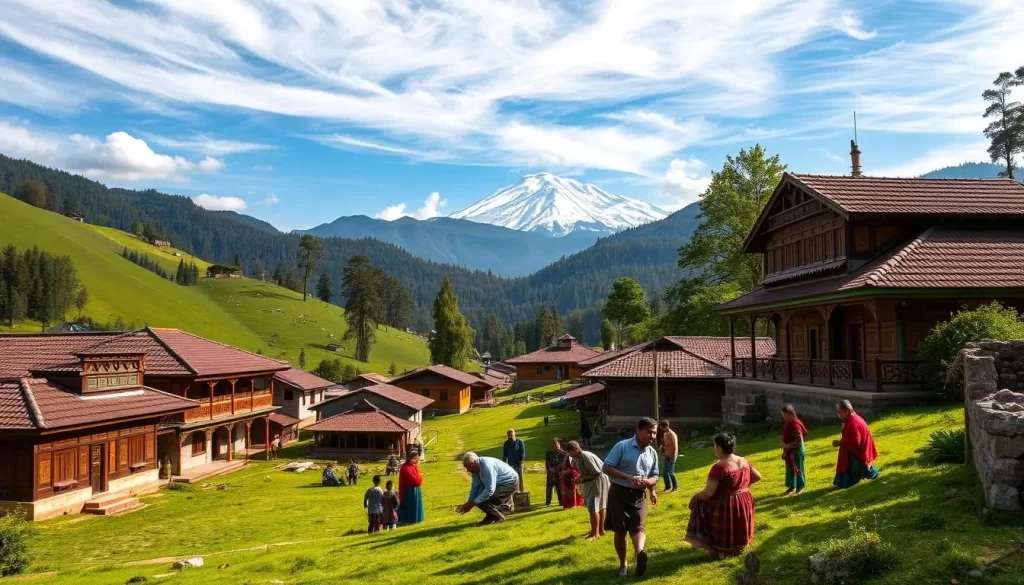
The Impact of Hindi and Assamese in Arunachal Pradesh
As you explore the linguistic landscape of Arunachal Pradesh, you’ll notice the significant impact of Hindi and Assamese on the local languages. This influence is particularly evident in certain regions, where historical and cultural connections have fostered linguistic exchange.
Hindi as a Link Language
Hindi plays a crucial role as a link language in Arunachal Pradesh, facilitating communication among people from different linguistic backgrounds. You can observe its widespread use in official contexts, media, and daily interactions, especially in urban areas. The use of Hindi has been further amplified by its presence in education and government services, making it an essential tool for social and economic integration.
Influence of Assamese in Border Regions
The influence of Assamese is predominantly seen in the southern parts of Arunachal Pradesh that border Assam. In districts like Tirap, Changlang, and parts of East Siang, Assamese serves as a trade language and lingua franca, enabling communication between different tribal communities and with people from Assam. The historical connections between Arunachal Pradesh and Assam have led to a significant cultural and literary exchange, with Assamese having a noticeable impact on the indigenous communities living in the border regions.
You’ll discover that the proximity to Assam has created a distinctive linguistic environment in southern Arunachal Pradesh, differing from the higher mountain regions. This unique blend of languages reflects the complex cultural dynamics at play in the region.
Language and Education in Arunachal Pradesh
You’re about to uncover how language influences education in Arunachal Pradesh, a region known for its rich linguistic diversity. The state’s educational system is navigating the challenges of a multilingual society, where the choice of medium of instruction and the incorporation of local languages are critical issues.
Medium of Instruction in Schools
In Arunachal Pradesh, the medium of instruction in schools is primarily English, following a national trend. However, the use of local languages varies, with some schools incorporating mother tongue-based education, especially in the early grades. This approach aims to improve educational outcomes by making learning more accessible and meaningful for tribal students.
- Some schools have introduced mother tongue-based multilingual education (MTB-MLE) to cater to the diverse linguistic backgrounds of their students.
- The use of local languages alongside English and Hindi is being explored in pilot projects across different parts of the state.
Mother Tongue Education Initiatives
There are emerging initiatives to introduce mother tongue-based multilingual education in the early years of schooling. The concept of MTB-MLE is gaining traction as it offers potential benefits for children from tribal communities, including improved understanding and retention. However, implementing MTB-MLE in Arunachal Pradesh comes with its challenges, such as the lack of standardized orthographies and teaching materials for many local languages.
Despite these challenges, the initiatives aim to strike a balance between educational outcomes and the preservation of cultural and linguistic rights. You’re witnessing a concerted effort to make education more inclusive and effective in this linguistically diverse region of India.
Linguistic Challenges in a Multilingual State
As a state with remarkable linguistic diversity, Arunachal Pradesh must navigate the complexities of communication across different language groups. The presence of numerous languages poses significant challenges, but also offers opportunities for cultural enrichment and exchange. Effective integration strategies are crucial to harnessing these opportunities.
Communication Barriers Between Tribes
One of the primary challenges in Arunachal Pradesh is the communication barrier between different tribal communities. With numerous languages spoken across the state, interactions between tribes can be complex. For instance, in a region where Nyishi, Adi, and Galo languages are spoken, finding a common means of communication can be daunting.
The use of link languages has emerged as a practical solution to this challenge. Languages like Hindi and English serve as bridges across linguistic boundaries, facilitating communication in various contexts, including administration, education, and trade.
Solutions for Linguistic Integration
Various approaches have been developed to address the challenges of linguistic diversity in Arunachal Pradesh. One key strategy is the promotion of multilingualism, where residents are encouraged to learn multiple languages, including their mother tongue and one or more link languages. This approach not only facilitates communication across language groups but also helps in preserving the cultural heritage associated with each language.
Institutional approaches to linguistic integration include language policies in education, administration, and media. For example, incorporating local languages into school curricula can help students maintain a strong connection to their cultural roots while acquiring proficiency in widely spoken languages.
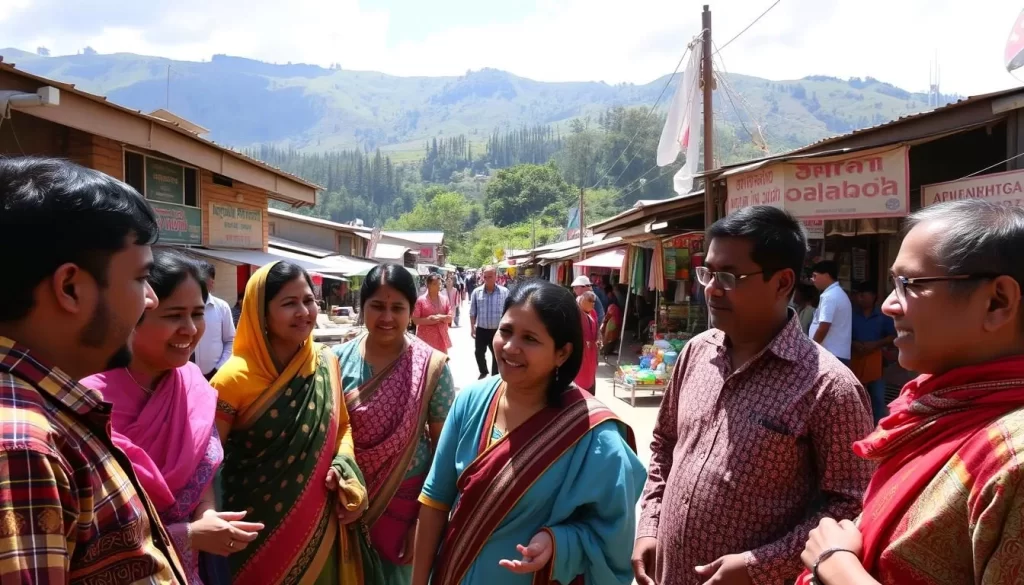
Digital technologies and social media are also creating new possibilities for communication across language boundaries in the state. These platforms enable people to connect with others from different linguistic backgrounds, fostering a sense of community and promoting cultural exchange.
Script Development for Tribal Languages
In the quest to preserve the linguistic diversity of Arunachal Pradesh, script development for tribal languages has emerged as a key initiative. You are about to explore how this development is crucial for the state’s cultural heritage.
Traditional Writing Systems
Traditionally, many languages in Arunachal Pradesh were unwritten, relying on oral transmission. However, with the advent of script development, some of these languages are now being documented in written form. The use of existing scripts like Roman and Devanagari has been adapted for this purpose. For instance, the Roman script has been used for languages such as Nyishi and Adi, facilitating their use in educational materials and literature.
Some tribal languages have adopted or adapted scripts from neighboring regions or languages. For example, the use of the Devanagari script for certain tribal languages has been influenced by its widespread use in Hindi and other regional languages.
| Language | Script Used | Notable Features |
|---|---|---|
| Nyishi | Roman | Adapted for educational materials |
| Adi | Roman | Used in literature and documentation |
| Apatani | Roman | Efforts to develop educational content |
Modern Script Adaptation Efforts
Modern efforts to develop writing systems for Arunachal Pradesh’s languages include adaptations of Roman, Devanagari, and other scripts. You will discover that these adaptations are tailored to fit the phonological needs of the tribal languages, which often include tones and sounds not found in the source scripts.
For major languages like Nyishi, Adi, Apatani, and Galo, specific script development projects are underway. These projects involve not just the adaptation of scripts but also the creation of educational materials, dictionaries, and literature in these languages. The technical challenges are being addressed through innovative solutions, such as diacritical marks to represent unique sounds.
Practical considerations, including ease of learning, compatibility with technology, and community preferences, play a significant role in script choice. The involvement of local communities in the script development process ensures that the chosen scripts are acceptable and usable by the target populations.
- Adaptation of Roman and Devanagari scripts for tribal languages
- Creation of educational materials and literature
- Innovative solutions for representing unique sounds
- Community involvement in script development
The Future of Languages in Arunachal Pradesh
The linguistic heritage of Arunachal Pradesh is at a crossroads, with modern technology offering new avenues for preservation. As we explore the future of languages in this region, it’s essential to consider both the challenges faced by the linguistic diversity and the opportunities presented by technological advancements.
Endangered Languages and Revitalization
Many languages in Arunachal Pradesh are considered endangered, with some having very few fluent speakers, mostly among the older generation. Efforts to revitalize these languages include language documentation projects, cultural camps, and educational programs that promote the use of tribal languages among younger generations. Community involvement is crucial in these efforts, as it ensures that the languages are not only preserved but also continue to evolve.
- Language documentation projects are creating archives of linguistic data.
- Cultural camps are promoting the use of tribal languages among children.
- Educational programs are incorporating mother tongue instruction.
Digital Preservation and Documentation
Modern technology is being leveraged to document and preserve the languages of Arunachal Pradesh through audio recordings, videos, and digital dictionaries. Digital tools and platforms are being used to record, analyze, and share linguistic data, making it possible to create online dictionaries, language learning apps, and digital archives for tribal languages.
Furthermore, social media and digital communication are opening new domains for language use among younger generations, providing opportunities for the languages to adapt and evolve in the digital age.
Conclusion
As we conclude our exploration of Arunachal Pradesh, it’s clear that this region is a true marvel of linguistic diversity. You’ve gained a comprehensive understanding of the extraordinary linguistic tapestry that makes Arunachal Pradesh one of the world’s most linguistically diverse regions.
The state’s linguistic landscape is characterized by numerous languages belonging to several language families, reflecting its strategic location in North East India. You’ve seen how English serves as the official language, while indigenous languages play a vital role in cultural identity.
However, many of these languages face significant challenges, highlighting the importance of preservation efforts for both cultural and scientific reasons. Ongoing initiatives to document, preserve, and revitalize the state’s languages through government projects, community endeavors, and academic research are crucial.
Arunachal Pradesh‘s linguistic diversity represents both a challenge for governance and education and a precious cultural heritage worth protecting. This diversity also reflects broader patterns of human adaptation in mountainous frontier regions worldwide, making Arunachal Pradesh a significant case study in diversity and linguistic richness.
The above is subject to change.
Check back often to TRAVEL.COM for the latest travel tips and deals.
